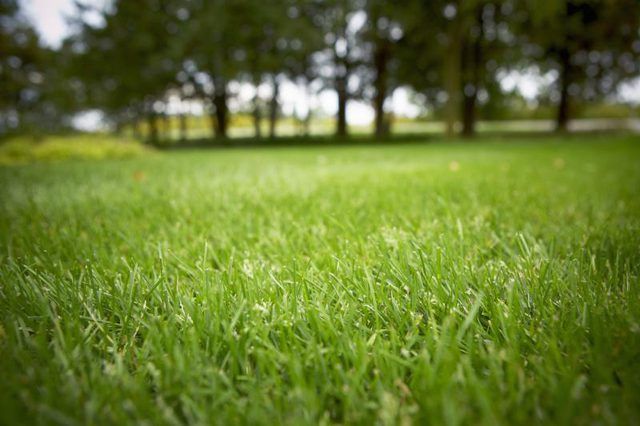Bulbs
Flower Basics
Flower Beds & Specialty Gardens
Flower Garden
Garden Furniture
Garden Gnomes
Garden Seeds
Garden Sheds
Garden Statues
Garden Tools & Supplies
Gardening Basics
Green & Organic
Groundcovers & Vines
Growing Annuals
Growing Basil
Growing Beans
Growing Berries
Growing Blueberries
Growing Cactus
Growing Corn
Growing Cotton
Growing Edibles
Growing Flowers
Growing Garlic
Growing Grapes
Growing Grass
Growing Herbs
Growing Jasmine
Growing Mint
Growing Mushrooms
Orchids
Growing Peanuts
Growing Perennials
Growing Plants
Growing Rosemary
Growing Roses
Growing Strawberries
Growing Sunflowers
Growing Thyme
Growing Tomatoes
Growing Tulips
Growing Vegetables
Herb Basics
Herb Garden
Indoor Growing
Landscaping Basics
Landscaping Patios
Landscaping Plants
Landscaping Shrubs
Landscaping Trees
Landscaping Walks & Pathways
Lawn Basics
Lawn Maintenance
Lawn Mowers
Lawn Ornaments
Lawn Planting
Lawn Tools
Outdoor Growing
Overall Landscape Planning
Pests, Weeds & Problems
Plant Basics
Rock Garden
Rose Garden
Shrubs
Soil
Specialty Gardens
Trees
Vegetable Garden
Yard Maintenance
What Does Lime Do for Grass?
What Does Lime Do for Grass?. Lime is a soil conditioner or amendment, as opposed to a fertilizer. The main purpose of adding lime to a lawn is to decrease the acidity of the soil to a pH range that is optimal for growing healthy, vigorous grass. Two kinds of lime are used for lime application: ground limestone, which consists mostly of calcium...

Lime is a soil conditioner or amendment, as opposed to a fertilizer. The main purpose of adding lime to a lawn is to decrease the acidity of the soil to a pH range that is optimal for growing healthy, vigorous grass. Two kinds of lime are used for lime application: ground limestone, which consists mostly of calcium carbonate, and dolomitic lime, which contains both calcium and magnesium. Which lime you should use depends on whether your soil is deficient in magnesium. A soil test laboratory can tell you if your soil is magnesium-deficient. Only lime your lawn when soil test results indicate it is necessary.
Correcting the Soil pH
The optimal soil pH for most grasses lies between 6 and 7. A pH of 7 is neutral, and a soil pH less than 7 means that the soil is acidic, while a pH higher than 7 indicates an alkaline soil. When the soil pH drops below 6.0, nutrients such as nitrogen, potassium, phosphorus, calcium and magnesium become unavailable to grasses. No matter how much fertilizer you add, grasses will not be able to utilize the nutrients at a pH below 6.0. The unavailability of nutrients weakens the grass plant and makes it more susceptible to heat, drought and disease stress. Acid soils are often called "sour" and alkaline soils "sweet." Lime is said to sweeten the soil. To determine the soil pH, use a home soil test or send a soil sample to a soil-testing laboratory.
Lime Allows Nutrient Uptake
Don't lime unless your soil test indicates that your soil pH is too low. Liming helps grasses to take up nutrients from the soil by providing an optimal pH if your soil is too acidic; it also furnishes grass directly with calcium and magnesium, which are important minerals for growth. In addition, lime allows for the proper uptake of other minor nutrients, such as zinc and copper. Because lime raises the soil pH, it also creates a more favorable environment for beneficial microorganisms.
Microbes for a Better Lawn
Soil microorganisms, or microbes, are important in breaking down thatch. Thatch is a dense layer of organic material on top of the soil that restricts air, water and nutrient movement to the roots of growing grass. Microbes also break down nitrogen fertilizers so that grasses can use the nitrogen. This breakdown only occurs if microbes are present in sufficient numbers. Microbes are needed to break down urea, compost and organic fertilizers. A strongly acidic soil prevents growth of beneficial microbes, and lime can remedy the situation by making the soil sweeter or more alkaline.
Lime Reduces Toxicity Risks
By increasing the soil pH and making it more alkaline, lime reduces the solubility and uptake of soil aluminum, manganese and iron, which are toxic to grass plants when they are taken up in large amounts. Uptake of excess aluminum can burn the roots of grasses. An acidic soil causes greater uptake of these elements and reduces grass growth.
Too Much Lime
Too much lime can harm grass because a soil pH above 8.0 makes soil nutrients unavailable to grasses. Grass plants will not be able to take up nitrogen, phosphorous, iron, zinc, boron, copper and manganese at a high alkaline pH, resulting in a lawn of poor quality. In alkaline soils with a pH of 8.5 or greater, phosphorus is turned into an insoluble compound, tricalcium phosphate, which prevents grass plants from using phosphate. Grass may turn yellow from iron deficiency in soils made strongly alkaline by too much lime. A soil pH test will ensure that you don't add lime when it is not needed and can do harm.
Time of Lime Application
Apply lime to new lawns when you prepare the soil for seeding, if the soil test indicates a low soil pH. You can lime established lawns any time of the year if the soil test indicates it is necessary, but the best times are fall, winter and early spring. Light or sandy soils need less lime, whereas clay soils should receive more lime. Generally, lawns need a lime application every two to five years to generate an optimal pH for grass.